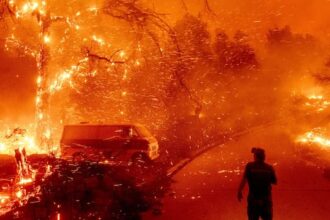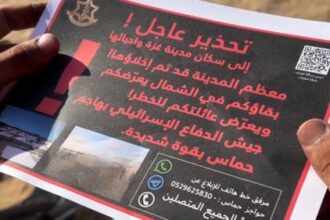As the tenuous ceasefire between Israel and Hamas entered its second day, thousands of displaced Palestinians cautiously returned to northern Gaza on Saturday, confronting a landscape of devastation where familiar neighborhoods have been reduced to unrecognizable ruins. Simultaneously, American military personnel arrived in Israel to establish a temporary pier for humanitarian aid delivery, creating a stark juxtaposition of destruction and potential relief.
The four-day pause in hostilities, brokered through intense diplomatic efforts, has opened a brief window for humanitarian assistance to reach Gaza’s 2.3 million residents who have endured seven weeks of relentless bombardment and increasingly dire conditions. The agreement also enabled the release of 24 hostages from Hamas captivity on Friday, with more expected in coming days.
“I couldn’t recognize my own street,” said Mahmoud al-Masri, a 43-year-old father of three who returned to Gaza City’s Shati refugee camp. “Everything is destroyed. My children kept asking about their toys, their books, but there’s nothing left to salvage.”
The ceasefire agreement stipulates the daily entry of 200 aid trucks and fuel into Gaza, addressing critical shortages that have paralyzed hospitals and water treatment facilities. According to United Nations officials, approximately 300 trucks carrying food, medicine, and emergency supplies crossed into Gaza on Friday and Saturday, though aid workers stress this remains insufficient given the scope of the humanitarian crisis.
In northern Gaza, residents described scenes of utter devastation upon their return. Entire apartment blocks have been reduced to concrete skeletons, while critical infrastructure lies in ruins. The World Health Organization reports that 22 of Gaza’s 36 hospitals are no longer functioning, with remaining facilities operating well beyond capacity.
“We’ve treated thousands of injured civilians, many of them children with traumatic injuries requiring complex surgeries,” said Dr. Sarah Bennett, a physician with Doctors Without Borders working in Gaza. “The medical system was already strained before this conflict. Now it’s completely overwhelmed.”
Meanwhile, U.S. military personnel landed in Israel to begin construction of a temporary floating pier that would facilitate maritime delivery of humanitarian supplies. The Biden administration announced this initiative would establish an alternative supply route independent of the congested land crossings that have severely restricted aid flow.
Pentagon spokesperson Rear Admiral Daniel Hagari confirmed that approximately 500 U.S. troops would be involved in the operation, emphasizing they would remain offshore and would not enter Gaza. “This temporary pier will significantly increase delivery capacity for humanitarian assistance,” Hagari stated. “It represents one component of a broader strategy to address Gaza’s humanitarian emergency.”
The ceasefire has also created space for diplomatic engagement, with Qatari and Egyptian mediators working to extend the pause beyond its initial four-day timeframe. According to sources familiar with negotiations, Hamas has expressed willingness to extend the truce if additional Palestinian prisoners are released from Israeli detention.
Israeli Prime Minister Benjamin Netanyahu visited troops near Gaza on Friday, reiterating that military operations would resume after the ceasefire ends. “This is a brief pause,” Netanyahu told soldiers. “We will continue with full force to dismantle Hamas’s military capabilities.”
The conflict, which began with Hamas’s October 7 attack on southern Israel that killed approximately 1,200 people and took 240 hostages, has resulted in over 15,000 Palestinian deaths according to Gaza health authorities, though these figures cannot be independently verified.
As night fell over Gaza, families huddled in damaged buildings or makeshift shelters, their futures hanging in the balance between the temporary reprieve of ceasefire and the looming threat of renewed hostilities. The question remains: will this brief pause in violence create momentum for a more sustainable resolution, or merely represent a momentary break in what has already become one of the deadliest chapters in this decades-long conflict?







